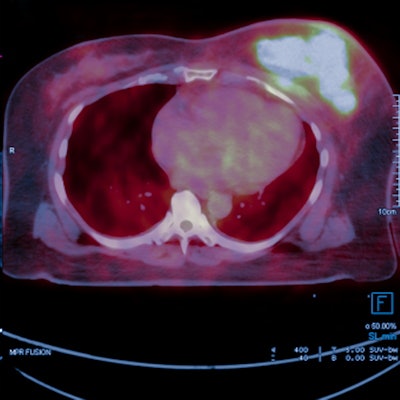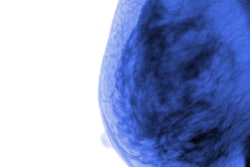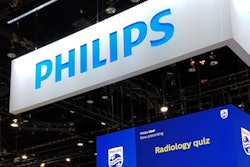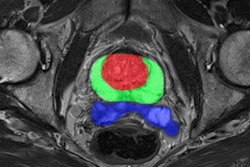
A European team of researchers has found that an artificial intelligence (AI) algorithm can process F-18 FDG PET exams acquired at two-thirds of the standard radiopharmaceutical dose and produce diagnostically effective images, according to a study published on 9 March in EJNMMI Physics.
The findings are good news for patients coping with disease that requires multiple PET exams over the course of a year, wrote a team led by Katia Katsari of Affidea in Amsterdam, the Netherlands. Affidea is a diagnostic imaging, outpatient, and cancer care services provider.
"We can be confident that for adult patients undergoing [F-18] FDG PET, reducing the dose to 66% of standard produces images with noninferior image quality when processed by [an AI algorithm]," it wrote.
The use of PET to evaluate the response of patients to systemic therapy for diseases such as cancer has increased in recent years, a trend that exposes patients to more radiation. Researchers have sought to address the problem by developing reconstruction algorithms to improve the quality of images taken with reduced radiotracer doses after the fact.
But these types of algorithms can be complicated and time-consuming to use, Katari and colleagues noted. They wondered if AI could help if incorporated into the image acquisition process from the beginning.
The group conducted a study that included data from 61 patients who underwent one low-dose CT exam and two sequential PET scans for a range of cancers at Affidea IRMET, a PET center in Torino, Italy; the exams were acquired with a dose of F-18 FDG reduced by one-third (131 MBq compared with 196 MBq) between February and April 2020.
The AI-processed PET exams consisted of the reduced dose and standard acquisition time, while the non-AI-processed PET exams were acquired with "an elapsed time, increasing the minutes per bed-position, to simulate normal acquisition time and standard injected dose," the authors wrote. They used a commercially available AI algorithm (SubtlePET, Subtle Medical) to reconstruct the PET-processed images.
Four blinded readers evaluated the exams, ranking image quality and lesion detectability on a five-point scale (scores of 4 and 5 represented adequate diagnostic confidence). The team also assessed whether using the AI algorithm produced any cost-savings.
The study found no significant difference between the AI and non-AI PET/CT datasets and "almost perfect" reader agreement, with an intraclass correlation coefficient (ICC) of 0.98 for the AI-processed dataset and 0.92 for the non-AI-processed dataset. There were no false positives from the AI-processed PET exams.
| Comparison of PET exam performance with and without use of an AI algorithm | ||
| Measure | Non-AI PET | AI + PET |
| Mean number of lesions detected | 182.7 | 181.7 |
| Target lesion mean SUVmax value | 9.8 | 11.4 |
| Liver mean SUVmean value | 2.1 | 1.9 |
| Intraclass correlation coefficient (ICC) | 0.92 | 0.98 |
To estimate any savings that would come from using SubtlePET, the team used data from the total number of F-18 FDG PET exams performed at the center in 2019 and the cost of radiopharmaceutical for these exams, finding that it would reduce the cost per PET exam by 15% to 20% due to less use of F-18 FDG.
More research on the use of AI to reduce radiation exposure is merited, especially for pediatric populations, Katsari and colleagues wrote.
"Further studies should be undertaken to determine the lower limit of 18F-FDG administration that AI processing will allow while still preserving diagnostic image quality, and whether these results are reproducible in pediatric population in which dose reduction is even more pertinent," they concluded.



















